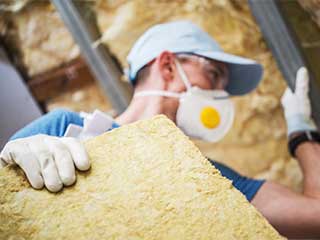
What Is Fiberglass?
As the name suggests, it is made out of glass fibers that are woven together to make a wool-like material that is usually sold in what are called blankets, or sheets, or in a loose fill state to be sprayed into cavities. It's used frequently for all types of insulation such as in walls and ceilings, but it's used in attics as well.
Pro: It's Fire Resistant & Green Friendly!
One of the reasons it's frequently used is due to the fact it can't catch on fire, so it's not a risk as much as cellulose is if it's untreated. A lot of fiberglass is now made with recycled materials too, so it's good for the environment just like cellulose is, as long as you choose a brand that makes use of this method.
Pro: It's Cheap And Easy!
Likely the strongest reason behind fiberglass being frequently used is due to the fact it's relatively inexpensive compared to other forms. It's also fairly simple to install yourself if you want to DIY it, and you can find batts or otherwise at most hardware-type stores. If you're looking to save money, it's certainly a choice to consider.
Cons: It Can Be Dangerous!
If you aren't careful however, fiberglass can be harmful. The tiny slivers of glass that it's made of can embed into your hands if gloves aren't used, or even enter your lungs which can be a huge health risk. While most fiberglass nowadays is covered with a protective barrier to prevent this, it's still important to be wary when handling it and wear protective gear.
Cons: Retains Moisture And May Sag!
Unfortunately, due to its structure, it's fairly easy for moisture to get into this type of insulation and begin to degrade it. Mold and mildew can start to grow and spread, which not only damages the insulation itself, but also the wood of your attic and even your belongings. Another problem is that it's fairly likely that the fiberglass will begin to shift and sag over time, creating cold spots where there is no longer anything keeping air from escaping. It means you'll be losing energy, and your bill is going to rise until you get it replaced with fresh material, and this may negate its cheapness.
